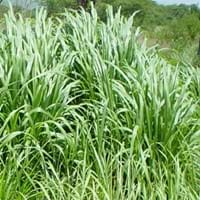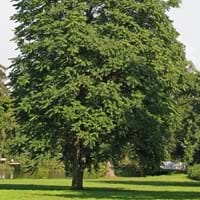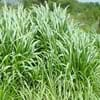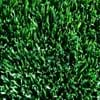Life Span
Perennial
Perennial
Origin
Middle Africa
China
Types
Not Available
Not Available
Habitat
Floodplains, Forest margins, Tropical regions, waterways, Wet lands, Woodlands
Fields, Forest edges, Grassland, Roadsides
USDA Hardiness Zone
7-11
4-8
Sunset Zone
A1, A2, A3, H1, H2, 1a, 1b, 2a, 2b, 3a, 3b, 4, 5, 6, 7, 8, 9, 10, 11, 12, 13, 14, 15, 16, 17, 18, 19, 20, 21, 22, 23, 24
Not Available
Habit
Clump-Forming
Arching/Fountain-shaped
Flower Color
Sandy Brown
Yellow green, Light Green
Flower Color Modifier
Bicolor
Bicolor
Fruit Color
Non Fruiting Plant
Pink, Light Green, Sienna
Leaf Color in Spring
Purple
Green
Leaf Color in Summer
Light Green
Dark Green
Leaf Color in Fall
Purple
Dark Green
Leaf Color in Winter
Purple
Not Available
Leaf Shape
Long Linear
Heart-shaped
Plant Season
Spring, Summer, Fall, Winter
Spring, Summer
Sunlight
Full Sun
Full Sun, Partial Sun, Partial shade
Growth Rate
Very Fast
Fast
Type of Soil
Clay, Loam, Sand
Clay, Loam, Sand
The pH of Soil
Acidic, Neutral, Alkaline
Acidic, Neutral, Alkaline
Soil Drainage
Well drained
Average
Bloom Time
Summer, Late Summer
Spring, Late Spring, Early Summer, Summer
Tolerances
Cold climate, Drought, Salt
Pollution, Drought, Salt, Soil Compaction
Where to Plant?
Ground
Ground
How to Plant?
Budding, Seedlings
Seedlings
Plant Maintenance
Low
Medium
Watering Requirements
Requires regular watering, Water more in summer
Average Water Needs, Do Not over Water
In Summer
Lots of watering
Drought Tolerant, Average Water
In Spring
Moderate
Drought Tolerant, Average Water
In Winter
Average Water
Drought Tolerant, Average Water
Soil pH
Acidic, Neutral, Alkaline
Acidic, Neutral, Alkaline
Soil Type
Clay, Loam, Sand
Clay, Loam, Sand
Soil Drainage Capacity
Well drained
Average
Sun Exposure
Full Sun
Full Sun, Partial Sun, Partial shade
Pruning
Remove dead leaves, Remove dead or diseased plant parts
Prune in late summer or fall, Prune in late winter, Remove damaged leaves, Remove dead branches, Remove dead leaves
Fertilizers
Nitrogen, organic fertlizers
All-Purpose Liquid Fertilizer
Pests and Diseases
Insects, Red blotch
Red blotch, Spotted Lanterfly
Plant Tolerance
Cold climate, Drought, Salt
Drought, Variety of soil types
Flowers
Showy
Insignificant
Flower Petal Number
Single
Single
Fragrant Bark/Stem
No
Yes
Foliage Texture
Fine
Coarse
Foliage Sheen
Glossy
Matte
Attracts
Birds, Flying insects
Birds
Allergy
Asthma, breathing problems
allergic reaction, Skin irritation
Aesthetic Uses
Not Used For Aesthetic Purpose
Beautification, Showy Purposes
Beauty Benefits
No Beauty Benefits
No Beauty Benefits
Environmental Uses
Air purification, Amazing growth rate, Food for animals, Food for insects, Prevent Soil Erosion, Shelter for wildlife, Wildlife, Windbreak
Air purification
Medicinal Uses
Eye Problems, Headache, Skin Disorders, Wounds
Anthelmintic, Antispasmodic, Asthma, Astringent
Part of Plant Used
Leaves, Seeds
Bark, Root
Other Uses
Food for animals, Used As Food
Used as Ornamental plant, Used for its medicinal properties, Used for woodware
Used As Indoor Plant
No
No
Used As Outdoor Plant
Yes
Yes
Garden Design
Bedding Plant, Feature Plant, Foundation, Mixed Border
Shade Trees, Street Trees
Botanical Name
PENNISETUM purpureum 'Prince'
AILANTHUS altissima
Common Name
Elephant Grass
Tree-of-Heaven
In Hindi
हाथी घास
कल्पवृक्ष
In German
Elefantengras
Baum des Himmels
In French
l'herbe à éléphant
Arbre de paradis
In Spanish
pasto elefante
Arbol del Cielo
In Greek
ελέφαντα χόρτο
Δέντρο του Ουρανού
In Portuguese
capim-elefante
Árvore do céu
In Polish
trawa słoniowa
Drzewo Nieba
In Latin
elephanti herba
Lignum de caelo
Phylum
Magnoliophyta
Magnoliophyta
Class
Liliopsida
Magnoliopsida
Family
Poaceae
Simaroubaceae
Genus
Pennisetum
Ailanthus
Clade
Angiosperms, Commelinids, Monocots
Angiosperms, Eudicots, Rosids
Tribe
Paniceae
Not Available
Subfamily
Panicoideae
Not Available
Number of Species
Not Available
Not Available
Importance of Elephant Grass and Tree-of-Heaven
Want to have the most appropriate plant for your garden? You might want to know the importance of Elephant Grass and Tree-of-Heaven. Basically, these two plants vary in many aspects. Compare Elephant Grass and Tree-of-Heaven as they differ in many characteristics such as their life, care, benefits, facts, etc. Every gardener must at least have the slightest clue about the plants he wants to plant in his garden. Compare their benefits, which differ in many ways like facts and uses. The medicinal use of Elephant Grass is Eye Problems, Headache, Skin Disorders and Wounds whereas of Tree-of-Heaven is Anthelmintic, Antispasmodic, Asthma and Astringent. Elephant Grass has beauty benefits as follows: No Beauty Benefits while Tree-of-Heaven has beauty benefits as follows: No Beauty Benefits.
Compare Facts of Elephant Grass vs Tree-of-Heaven
How to choose the best garden plant for your garden depending upon its facts? Here garden plant comparison will help you to solve this query. Compare the facts of Elephant Grass vs Tree-of-Heaven and know which one to choose. As garden plants have benefits and other uses, allergy is also a major drawback of plants for some people. Allergic reactions of Elephant Grass are Asthma and breathing problems whereas of Tree-of-Heaven have allergic reaction and Skin irritation respectively. Having a fruit bearing plant in your garden can be a plus point of your garden. Elephant Grass has no showy fruits and Tree-of-Heaven has showy fruits. Also Elephant Grass is not flowering and Tree-of-Heaven is not flowering . You can compare Elephant Grass and Tree-of-Heaven facts and facts of other plants too.





